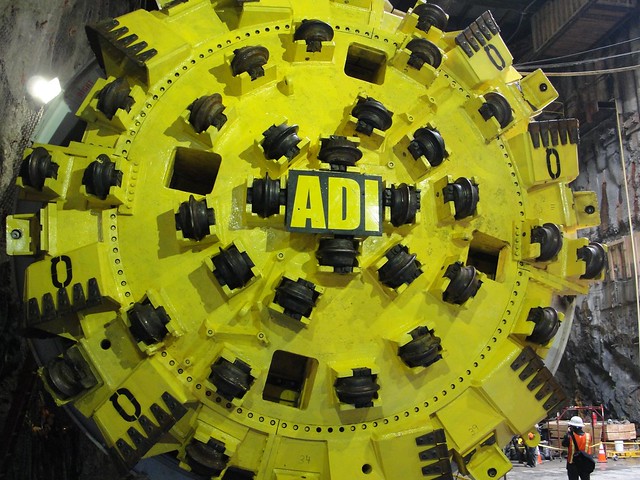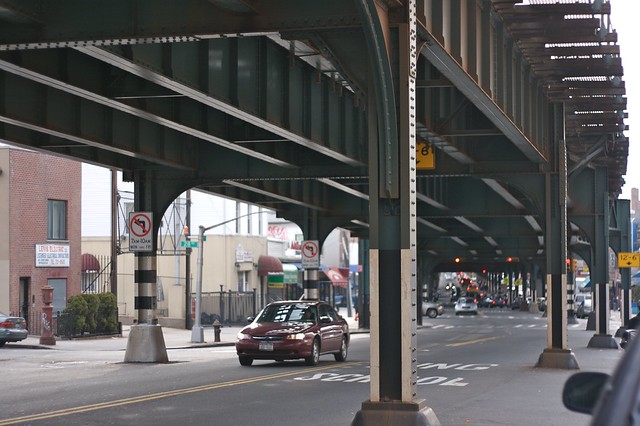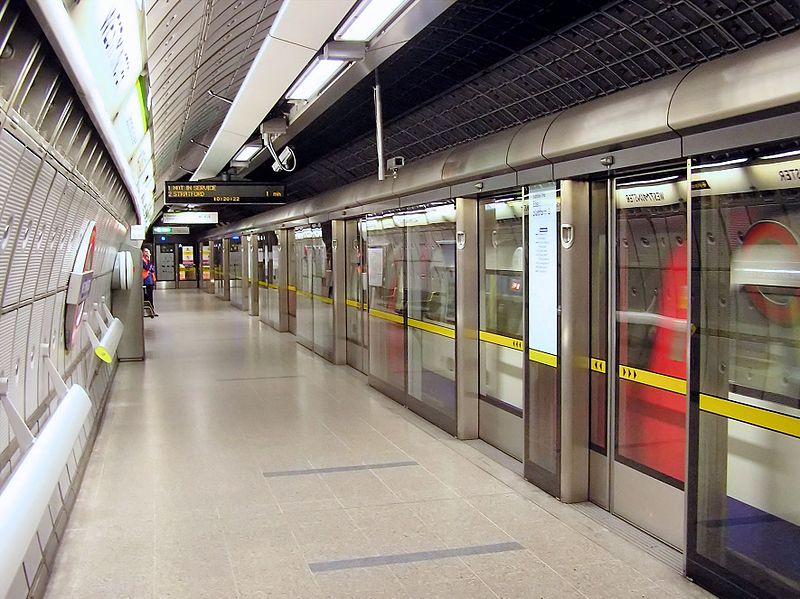
Amtrak's Gateway Tunnel addresses many of the criticisms leveled at the ARC Tunnel.
Since Gov. Chris Christie first announced plans to put a hold on and then cancel the ARC Tunnel, New Jersey’s Democratic Senate delegation has been at odds with the state’s Republican executive. Senators Frank Lautenberg and Robert Menendez have criticized Christie for sacrificing $3 billion in federal funding as well as the opportunity to expand rail access to New York City. Today, the two Senators have announced a plan to achieve greater cross-Hudson rail capacity while working with Amtrak and bypassing Christie’s control entirely.
Enter the Gateway Tunnel. This tunnel that Amtrak believes will take ten years to construct could be another answer to rail crisis the ARC Tunnel had been designed to address. It is similar to ARC’s Alt G plan and modeled on numerous Amtrak studies. Based on numerous reports, it may cost anywhere from $10-$13.5 billion, and once or if completed, it will allow 21 more trains per hour — 13 New Jersey Transit trips and eight Amtrak trains — into New York. The dearly departed ARC Tunnel would have allowed 25 more New Jersey Transit trains into the dead-end deep cavern underneath 34th St.
While the Gateway Tunnel expansion would allow fewer trains into the city, the new proposal addresses the biggest concerns ARC supporters — and opponents — had with the previous project. As Jim O’Grady for Transportation Nation and WNYC has reports, “Whereas ARC was supposed to terminate at platforms under Macy’s, a block east of Penn Station, Gateway would end a block to the south, nearer to street level. The block—West 30th and West 31st Streets between 7th and 8th Avenues—now mostly holds small businesses like restaurants, bars and a repair shop for musical instruments.” Metro-North too would be able to service the new Penn Station South. (For more from today’s unveiling of the Gateway Tunnel, check out this pdf.)

A satellite view of the New York side of the proposed Gateway Tunnel. (Via The Star-Ledger)
O’Grady had more on the early plans and the hopes that the Gateway Tunnel could usher in high-speed rail in the area as well. He writes:
A staff member for an elected official familiar with the project said Amtrak, which is taking the lead on the tunnel, would have to assemble properties on the Manhattan block to make it feasible. He said on the New Jersey side, Gateway would use a hole that construction crews had already started digging for the ARC Tunnel at Tonnelle Avenue near Secaucus…
An important part of the work would be to raise the Portal Bridge, a notorious bottleneck between Kearny and Secaucus over the Hackensack River. Trains must now slow to cross the 100 year-old bridge, or stop altogether while it is moved to let boats to pass by. A modernized bridge, along with a new tunnel’s added capacity, would speed up Amtrak’s service along the Northeast Corridor and help set the stage for future high-speed rail, should it ever arrive.
Meanwhile, Mike Frassinelli of The Star Ledger, who broke the story late last night, reports on how the Gateway Tunnel may conflict with New York City’s plan to send 7 train to New Jersey. The Senators and Amtrak are putting forward this proposal as an alternative to Bloomberg’s subway-based idea, and the federal officials hope to send the 7 not across the Hudson but to Penn Station. He writes:
Some transportation officials think the Gateway plan makes more sense than expanding the No. 7 subway line from New York City to Secaucus Junction, an idea floated over the last three months by the staff of New York Mayor Michael Bloomberg. Under Amtrak’s best-case scenario, the No. 7 line would also be extended to Penn Station, between 31st and 33rd streets, two blocks west of the Empire State Building.
During the afternoon press conference announcing this tunnel, current Amtrak board member and former Port Authority head Anthony Coscia denied a conflict with the 7 extension. “Regardless of whether the 7 extension happens, in order for there to be high-speed rail in the Northeast corridor, Amtrak would still need to build this project,” he said.
According to Frassinelli, Lautenberg, the more vocal critic of Christie’s politicized move to block the ARC Tunnel, has been working with Amtrak since the fall. “New Jersey is facing a transportation crisis,” he said. “Our commuters are fed up with train delays that make them late to work and endless traffic that traps them on our highways when they want to be home with their families. When the ARC tunnel was canceled, it was clear to me that we couldn’t just throw up our hands and wait years to find another solution.”
By turning away from state-based solutions and relying instead upon a federal rail provider who would ideally use a mix of infrastructure dollars and private investment for this project, Lautenberg can effectively cut Christie out from the bulk of the decision-making. Although New Jersey and New York will likely be asked to add some money to the pot via New Jersey Transit and the Port Authority, if Amtrak takes the lead, it — and not New Jersey’s reticent governor — will be in charge of securing the finances and arranging construction.
Right now, as O’Grady notes, the parties have yet to figure out financing and haven’t set construction plans. Amtrak is requesting $50 million this week for an engineering study and hopes to rely on work previously completed for ARC. Even as questions remain, though, rail proponents who have recognized the cross-Hudson congestion are thrilled that Gateway is on the table even if it is ten years away.
“This is not ARC,” Martin Robins, director of Rutgers’ Voorhes Transportation Center, said to The Star-Ledger. “In some respects, it is a lesser project. But it is still a very significant project. There will be benefits that will reverberate throughout New Jersey. This can be a wonderful alternative.”



 Jay Walder has been the head of the MTA with the power of both the CEO and Chairman for 16 months, and it sounds as though he’ll
Jay Walder has been the head of the MTA with the power of both the CEO and Chairman for 16 months, and it sounds as though he’ll 













